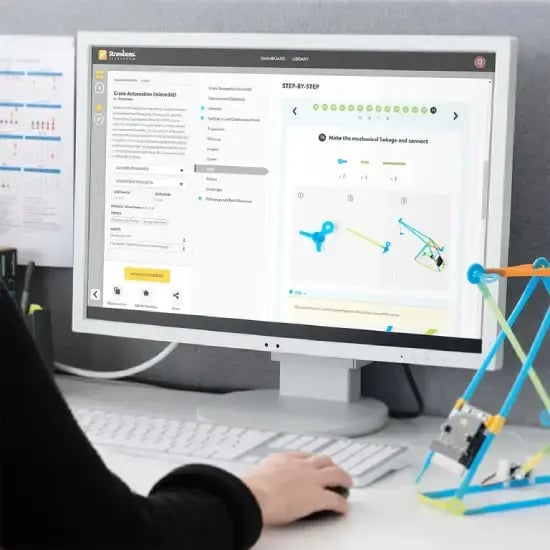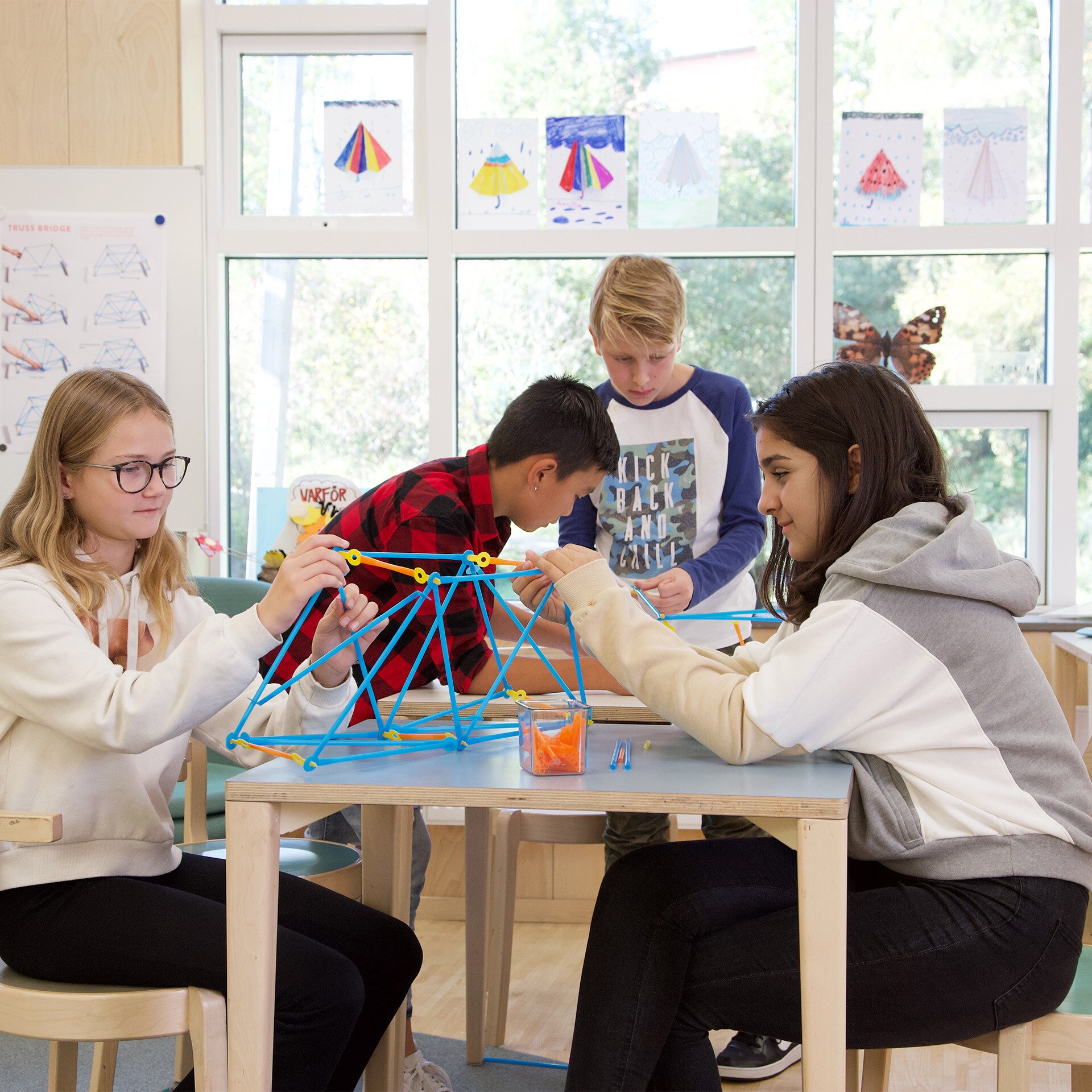
Designing Big Ideas Across Year Groups
Meaghan Creamer, a passionate educator and Makerspace leader at Lipscomb Academy in Tennessee, has transformed how students from pre-K to fifth grade engage with STEM.
Discover how Meaghan uses Strawbees to nurture creativity, build resilience, and foster collaboration—empowering every student to take bold steps in engineering, problem-solving, and innovation.

MeaghanCreamer
Makerspace Lab Coordinator
Lipscomb Academy
Tennessee
Background
Meaghan Creamer is a passionate educator based in Nashville, Tennessee, where she teaches at Lipscomb Academy in a space called iWonder (a dedicated maker space for pre-K through fifth grade).
After beginning her career as a third-grade teacher, Meaghan transitioned four years ago into this new, hands-on role. She now teaches seven classes a day as part of the school’s related arts rotation, with each class lasting between 40 to 45 minutes per week.
Her classroom is more than just a place to build, it’s a space for discovery, exploration, and learning through iteration. “The point of the class is to see things from more than their advertised use,” Meaghan explains, “like how a marker cap can be a tool to draw a perfect circle, or how we practice teamwork, communication, and productive feedback. Learning to fail and create different iterations of one design is a good thing.”

Implementation
When Meaghan first took on her maker space role, she was looking for tools that could unlock creativity and resilience, especially in younger learners. She needed something open-ended, intuitive, and collaborative, something that encouraged students to learn by doing, not just by listening.
Strawbees emerged as an ideal solution. “I find it a useful tool for giving students something and saying, figure it out,” Meaghan says. Even her youngest students (age four) could dive right in, figuring out how to connect the parts and make things move.'
Teaching engineering and design thinking to students as young as pre-K and kindergarten presents a unique challenge. Meaghan needed a tool that allowed for quick iteration, easy collaboration, and meaningful feedback. With no glue, tape, or advanced skills required, Strawbees allowed her students to build, modify, and learn from their creations in real time.
Equally important was teaching teamwork. Meaghan uses Strawbees to support this by encouraging students to create, share, and revise together. “It’s fun to see students give each other that feedback and then be able to go back to their design and make changes really quick,” Meaghan says. “They’re learning from both their peers and from the changes that they make.”

Outcomes
Strawbees became a cornerstone of Meaghan’s classroom through structured yet playful challenges. For example, her kindergarten class engages with the Strawbees online random problem generator. “I don’t even know what problem we’re going to solve today,” Meaghan tells her students. “But we’re going to solve something.” From building new cooking utensils to inventing tools that help make pizza, students are guided through the design thinking process from empathy to prototyping and testing, all in a single class session.
In first grade, the focus shifts to collaboration. One of Meaghan’s most engaging long-term projects involves building a Sierpinski pyramid over several weeks. “We start by talking about tetrahedrons and how to build them. Then, we practice connecting them into larger structures.” Students then move into a full-class build with defined roles. “On game day, I wear a referee shirt. We build and clean up the pyramid in 45 minutes—it’s intense but incredibly fun.”
Each build is followed by a class reflection where students discuss what worked, what didn’t, and how they might improve their collaboration in future challenges.
One of Meaghan’s most meaningful Strawbees experiences came through a student named “Lisa”, a fifth grader who had never found a tool in the maker space that truly sparked her interest. That changed the day Meaghan handed her a new box of Strawbees and told her to explore. “She came back to me 35 minutes later, beaming, she had created a Ferris wheel that actually moved,” Meaghan recalls. “Lisa ended up sharing that project at our STEM night, and to this day, she remembers that build. She said, ‘Miss Creamer, I will always remember that moment because I loved making it.’” It was a powerful reminder that creativity, when given the right tools, can unlock confidence and discovery for any learner.


How Meaghan Implemented STEM
“Start using them. You will learn things from your students in the way that they use Strawbees. The online resources are so valuable, whether you prefer scripted lessons or more open exploration.”

Meaghan Creamer
Makerspace Lab Coordinator, Lipscomb Academy
